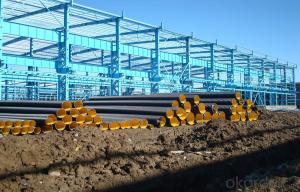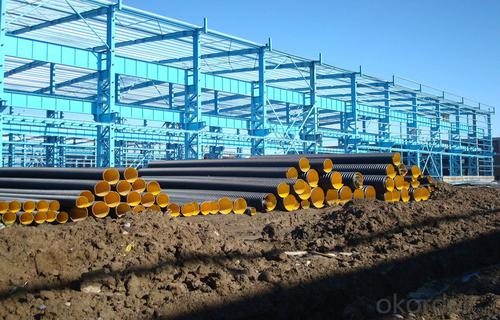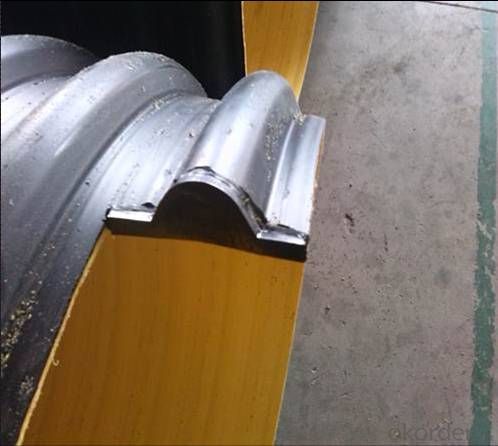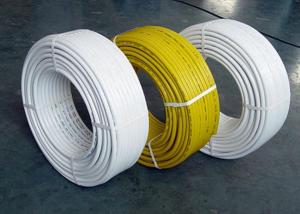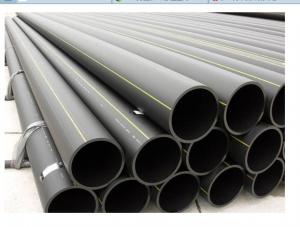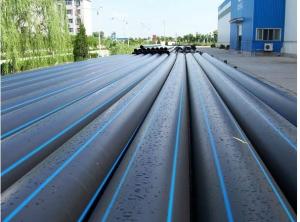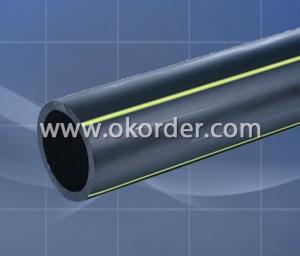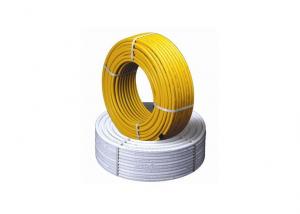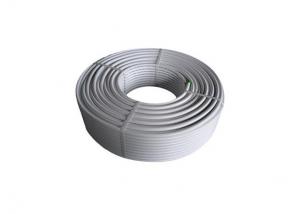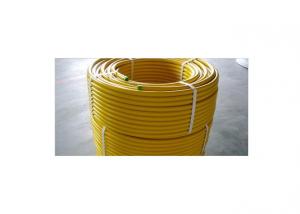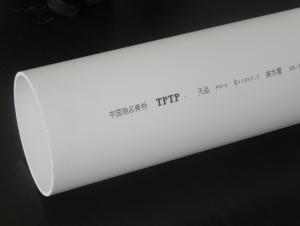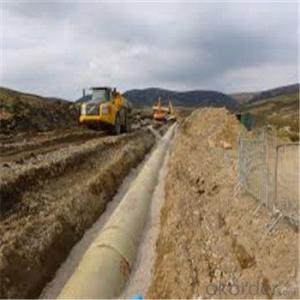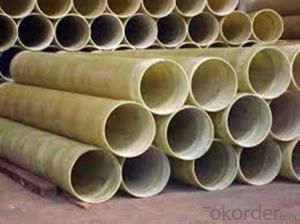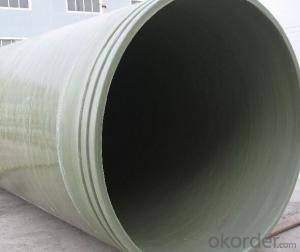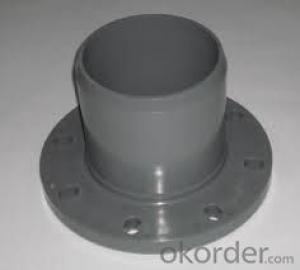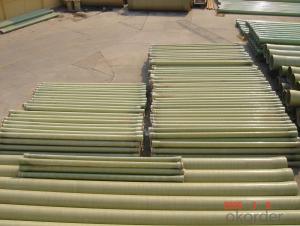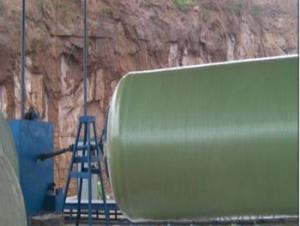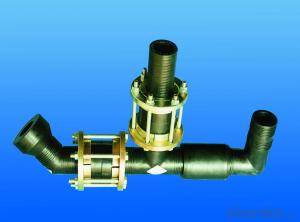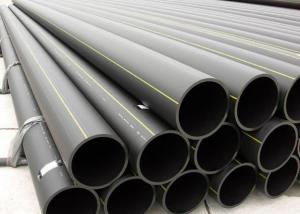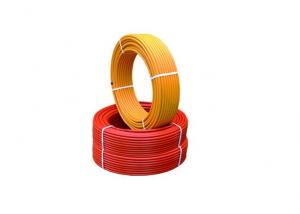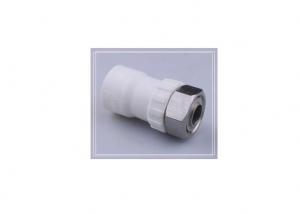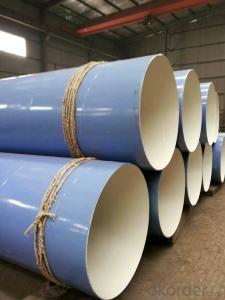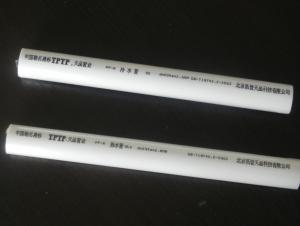Composite Metal Reinforced Spirally Corrugated Plastic Pipes
OKorder Service Pledge
OKorder Financial Service
You Might Also Like
Metal reinforced polyethylene(PE)spirally corrugated pipe is a new kind of double-wall spirally corrugated pipe. The HDPE is used as basic material, and the steel strap spiraled as the supporting part which is spiraled to corrugated wall structure.
Material
The stuffing material of steel reinforced HDPE pipe and fitting is PE 80 (piping class), and we use high quality low-carbon steel wire as the reinforcing part of the pipe and Q235 steel sheet for fittings.
Characteristics of PE 80(piping class) material
Characteristics | Test Standard | Unit | Result |
Melt Flow Index(5Kg,190℃) | ASTM D 1238 | G/10min | 0.56 |
Density | ASTM D 792 | G/cm3 | 0.954 |
Tensile Yield Strength | ASTM D 638 | Kg/cm2 | 230 |
Tensile Fracture Strength | ASTM D 638 | Kg/cm2 | 370 |
Tensile&Elongation Ratio | ASTM D 638 | % | ≥600 |
Brittleness Tempreature | ASTM D 746 | ℃ | ≤-70 |
Linear Expansion Coefficient | DIN 53752 | K-1 | 1.3x10-4 |
ESCR (F50) | ASTM D 1689 | HR | >2000 |
Thermal Stability | ISO 10837 | min | >20 |
Grade | ASTM D 4131(B) | PE 80 | |
Long-term Hydro Static Strength | ISO 9080 | MPa | 9.33 |
Short-term Hydro Static Strength | ASTM D 4131 | HR | >165 |
The characteristic of steel wire and sheet
Characteristics | Test Standard | Unit | Result | |
Steel wire | ||||
Tensile strength | GB/T 343-1994 | MPa | 400-500 | |
Tensile&Elongation Ratio | GB/T 343-1994 | % | 12 | |
Steel sheet | ||||
Tensile strength | GB/T 709-1988 | MPa | 200 | |
Tensile&Elongation Ratio | GB/T 709-1988 | % | 10 | |
| | | | | |
Characteristics
Because of the reasonable design and the advanced production technology, the Metal reinforced polyethylene(PE)spirally corrugated pipe possesses many advantages, such as high ring stiffness, resistance to corrosion and abrasion, light weight, convenient construction and installation etc..
It is a new kind of pollution-free plastic pipe which recommended by the Ministry of Construction. The features follows:
1 For the high elastic modulus of corrugated steel strip, the pipe possesses high ring stiffness.
Metal reinforced polyethylene(PE)spirally corrugated pipe makes use of the special corrugated steel as supporting structure. Because of steel’s high elastic modulus and pipe cross-section’s high moment of inertia, there are 4 ring stiffness classes for the pipe: SN8, SN10, SN12.5, and SN16. Its high ring stiffness breaks the limit that the highest ring stiffness of plastic pipe can only reach the SN8. It makes plastic pipe can satisfy various engineering requirements.
2 The HDPE materials is very stable is chemical reaction, the pipe can resist corrosion and abrasion, and has a long service life.
The steel is completely covered by HDPE, so only the HDPE is exposed to the liquid and the soil. HDPE is a kind of crystal Non-polar material, it is very stable and has no electric-corrosion. Pipe resists corrosion and abrasion, has a long service life.
3 Smooth inter wall, the transportation capability of the pipe is high
The inner wall surface of Metal reinforced polyethylene(PE)spirally corrugated pipe is smoother than concrete pipe. So the transportation capability of the pipe is obviously higher than that of concrete pipe under the same condition.
4 Hollow structure, light weight, convenient construction and installation
With the corrugated steel strip as supporting structure, it needs fewer raw materials than other plastic pipes. Metal reinforced polyethylene(PE)spirally corrugated pipe is light. It can be connected by many kinds of method, for example, electric melting belt; the transport and installation are convenient and simple.
5 HDPE and adhesive resin are combined with the steel strip closely in molten state.
As bond between HDPE and steel, there is a layer of adhesive resin which the steel strip’s surface coats with. To control the optimum temperature, pressure and time can ensure that HDPE and steel compound closely. It prevents the steel strip being rusty.
6 Flexible pipe, joint steady, resist to unequal settlement
Metal reinforced polyethylene(PE)spirally corrugated pipe possesses the characteristic of both rigidity and flexibility, when under pressure, the pipe and backfill soil can resist to external load and reasonable uneven settlements of soil.
Combined with the advantages of the electric-melting belt welding method and the patented technology of welding, it can ensure the welding quality be safety.
Specification
specification | minimum mean inside diameter (mm) | minimum inner wall thickness(mm) | minimum multilayer wall thickness (mm) | Maximum thread pitch(mm) |
300 | 294 | 2.5 | 4.0 | 55 |
400 | 392 | 3.0 | 4.5 | 65 |
500 | 490 | 3.5 | 5.0 | 75 |
600 | 588 | 4.0 | 6.0 | 85 |
700 | 673 | 4.0 | 6.0 | 110 |
800 | 785 | 4.5 | 6.5 | 120 |
900 | 885 | 5.0 | 7.0 | 135 |
1000 | 985 | 5.0 | 7.0 | 150 |
1100 | 1085 | 5.0 | 7.0 | 165 |
1200 | 1185 | 5.0 | 7.0 | 180 |
1300 | 1285 | 5.0 | 7.0 | 190 |
1400 | 1385 | 5.0 | 7.0 | 200 |
1500 | 1485 | 5.0 | 7.0 | 210 |
1600 | 1585 | 5.0 | 7.0 | 210 |
1800 | 1785 | 5.0 | 7.0 | 210 |
2000 | 1985 | | | |
2200 | 2185 | | | |
| | | | | |
Application
The 12th China National Games Projects
The 12th National Games of the People's Republic of China was held in Liaoning province in 2013. Liaoning was the 6th provincial level host of the games, following Beijing, Shanghai, Guangdong, Jiangsu and Shandong.
HTIDC won the bidding of drainage pipline projects of the 12th National Games in Shenyang in 2012.
- Q: Fire special steel plastic composite pipe is lined with plastic or plastic
- The steel plastic composite pipe is a new type of pipeline material developed recently in China. The pipeline has successfully solved the loss caused by pipeline corrosion every year. It belongs to the green energy saving pipeline completely. The composite pipe is formed by steel and plastic composite, so has the common advantages of steel, the compressive tensile and corrosion resistance, anti ultraviolet ability is other pipelines can and, therefore can use the pipeline in various engineering fields, and composite steel pipe according to the different environment play different performance advantages.
- Q: How do composite pipes handle seismic movements?
- Composite pipes are designed to handle seismic movements through their inherent flexibility and strength. The composite materials used in these pipes, such as fiberglass or carbon fiber, have excellent resistance to deformation and can withstand the stress caused by seismic activities. Additionally, the composite pipes are also equipped with flexible joints or couplings that allow for slight movements and absorb any vibrations or shocks. This ensures that the pipes can adapt to the ground's movement during an earthquake or other seismic events without causing any significant damage or leaks.
- Q: What are the disadvantages of using composite pipes?
- Some potential disadvantages of using composite pipes include higher upfront costs compared to traditional materials, limited availability in certain sizes and configurations, and the potential for degradation or damage under extreme temperatures or chemical exposure. Additionally, composite pipes may require specialized installation techniques and expertise, which can increase labor and maintenance costs.
- Q: Can composite pipes be used for CO2 capture and storage systems?
- Yes, composite pipes can be used for CO2 capture and storage systems. Composite materials, such as fiberglass-reinforced polymers, offer excellent resistance to corrosion and can withstand the high-pressure and temperature conditions associated with CO2 capture and storage. These pipes also provide superior strength and durability, making them a suitable choice for transporting and storing CO2 safely and efficiently.
- Q: What is the flexibility of composite pipes?
- The flexibility of composite pipes refers to their ability to bend and adapt to different angles and curves without compromising their structural integrity or performance.
- Q: What are the metal and composite pipes?
- In nature, most metals exist in a compound state, and a few metals, such as gold, platinum, silver and bismuth, exist in free form. Most of the metal minerals are oxides and sulfides. Other forms of existence are chlorides, sulfates, carbonates, and silicates. The bonds between the metals are metal keys, so they can be renewed at any change of position, which is why the metal is well stretched. A metallic element usually only shows a positive valence in a compound. It's also a musical style, or it's called heavy metal. There are different kinds of rock music, metal classification.
- Q: How do composite pipes handle water pressure fluctuations?
- Composite pipes are designed to handle water pressure fluctuations effectively. The unique construction of composite pipes, which combines different materials such as plastic and fiberglass, allows them to be highly resilient and flexible. This flexibility enables composite pipes to absorb and distribute the force exerted by water pressure fluctuations, preventing damage and maintaining their structural integrity. Additionally, the smooth interior surface of composite pipes reduces friction, ensuring smooth water flow even during pressure variations.
- Q: Are composite pipes suitable for fire protection systems?
- Yes, composite pipes are suitable for fire protection systems. They are lightweight, corrosion-resistant, and have high strength-to-weight ratios, making them ideal for transporting water and suppressing fires efficiently. Additionally, composite pipes offer excellent resistance to heat and can withstand high temperatures, ensuring their reliability and durability in fire-related scenarios.
- Q: Can composite pipes be used for mining applications?
- Yes, composite pipes can be used for mining applications. Composite materials such as fiberglass and carbon fiber offer high strength, corrosion resistance, and lightweight properties that make them suitable for various mining operations, including transporting fluids, slurries, and compressed air. These pipes can withstand the harsh conditions and abrasive materials encountered in mining environments, making them a reliable and durable option for mining applications.
- Q: Can composite pipes be used for industrial cooling towers?
- Yes, composite pipes can be used for industrial cooling towers. Composite pipes are known for their high strength, corrosion resistance, and durability, making them suitable for handling the demanding conditions of industrial cooling tower applications. Additionally, these pipes offer excellent thermal insulation properties, reducing heat transfer and enhancing the overall efficiency of the cooling system.
Send your message to us
Composite Metal Reinforced Spirally Corrugated Plastic Pipes
OKorder Service Pledge
OKorder Financial Service
Similar products
Hot products
Hot Searches
Related keywords
